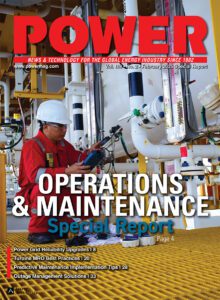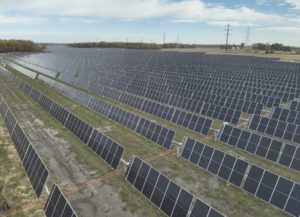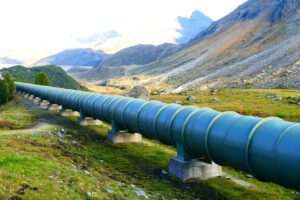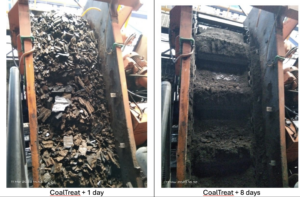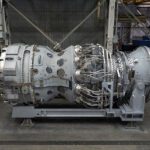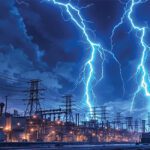As the power sector grapples with aging infrastructure, stricter sustainability mandates, and the rapid integration of renewables, innovation in operations and maintenance (O&M) has become critical to balancing cost, reliability, and environmental goals. Legacy power companies and new clean energy players alike are increasingly turning to digital solutions to streamline their O&M practices and unlock new levels of asset performance.
Just five years ago, grid operators managed a relatively limited number of centralized, one-way assets. Today, the power landscape is far more dynamic. Characterized by bidirectional flows, intermittent renewables, and an ever-growing fleet of distributed energy resources (DERs), the modern power ecosystem represents an intricate web of interconnected technologies, stakeholders, and systems that must be orchestrated in real-time. At the same time, business survival and growth in the sector are increasingly hinging on evolving demands that are forcing conventional power plants and grid operators to adopt more sophisticated, data-driven approaches to ensure reliability, flexibility, and cost competitiveness.
“Reliable, well-optimized operations and maintenance [O&M] practices are more critical now than ever before,” said Emily Obenauer, global director of Product Marketing at Sitetracker, a complete Asset Lifecycle Management platform provider serving the power, renewables, and digital infrastructure sectors. “The number of assets grid operators manage has grown significantly, and that’s without even factoring in bidirectional and mobile assets like vehicle-to-grid systems,” she explained. “Maximizing uptime for all these assets is absolutely essential to ensure peak performance and optimize returns.”
The shift has upended traditional approaches to O&M, forcing the power sector to rethink how it manages and maintains its assets. For utilities and independent power producers (IPPs), staying ahead of challenges has required adopting a proactive, data-driven approach. After years of implementing piecemeal solutions to explore digitalization’s impact on asset performance, the sector is now firmly beginning to reap value from innovative approaches. While objectives vary, they are beginning to demonstrate gains in operational efficiency while tangibly extending equipment lifespans. Others work on a fundamental level to reduce costs and downtime, empower a more skilled workforce, strengthen cybersecurity, and provide the flexibility needed for rapid decarbonization and rising energy demand.
Key Considerations for Modern O&M Tools
According to Obenauer, the rapid transformation of the power sector has exposed the limitations of legacy systems. Paper-based work orders and fragmented software tools, for example, are proving increasingly inadequate to manage the growing complexity of O&M. “These organizations are managing incredibly complex and fragmented technology stacks across multiple platforms—pen and paper, emails, and everything in between,” she explained. “It’s becoming increasingly clear that these legacy approaches can’t keep up with the growing complexity of asset lifecycles.” At the heart of the new generation of O&M tools is a focus on data integration and workflow optimization. Rather than relying on siloed systems and manual processes, power companies are seeking solutions that can consolidate asset information, maintenance histories, work orders, and financial data into “a single pane of glass.”
 |
|
1. One of Sitetracker’s many customers, Sweden-based energy technology innovator Flower, uses the platform to optimize the deployment and management of battery energy storage systems (BESS). Sitetracker’s deployment operations management software works to improve Flower’s efficiencies in engineering, procurement, and construction workflows to ensure data fidelity and seamless coordination across teams. This image shows the 42.5-MW Bredhälla BESS project, Sweden’s biggest operating battery park. Courtesy: Flower |
“Centralizing workflows and data across the entire lifecycle is incredibly impactful,” Obenauer added. “It simplifies operations, reduces inefficiencies, and helps teams optimize resources.” Sitetracker, which launched over a decade ago, leveraged its early experience working with customers’ digital infrastructure to launch its SaaS platform. Today, the solution offers a comprehensive, end-to-end platform to manage the full asset lifecycle across multiple industries (Figure 1). “From early origination, planning, and development of projects and assets, to ongoing operations, maintenance, and eventual asset management through to end of life, we provide one centralized place to manage it all.” She concluded, “This level of centralization drives efficiency, streamlines resources, and ensures optimal use of assets throughout their lifecycle.”
Beyond simply aggregating data, these platforms are designed to streamline core O&M activities like preventative maintenance scheduling, reactive work order management, and field crew dispatching. Sitetracker’s own tools, for example, provide job scheduling systems to improve field resource efficiency and coordination, mobile reporting tools for real-time updates from the field, and expense tracking, invoicing, and work order management.
By digitizing these workflows, asset owners and operators can realize significant gains in labor productivity, cost savings, and risk mitigation. But, as significantly, these solutions are also architected to integrate with other critical systems, from asset monitoring platforms to financial management tools. “It’s critical to tie everything back to the financials,” Obenauer said. “Whether you’re an executive or a project manager, it’s crucial to understand how each project or individual job impacts not just the financial return of an individual asset, but also the broader financial performance of the entire project or portfolio.”
Customization and Scalability
As power companies grapple with an ever-evolving portfolio of generation, transmission, and distribution assets, the ability to customize and scale O&M solutions has become paramount, Obenauer said. While much of the core work in this space is highly repeatable, each utility or IPP has unique requirements based on asset types, operational priorities, and organizational structures, she noted. “There’s always room for customization,” Obenauer said. “As new assets come online—whether for new sites, projects, or programs—we work closely with our customers to ensure they’re managed effectively. Our goal is to help asset owners and operators maintain long-term asset health while maximizing return on investment.”
However, customization of any solution must extend beyond the initial deployment, taking into account that power companies continually adapt their O&M practices to new challenges, for example, to integrate the latest sensor technology, optimizing maintenance schedules for a new fleet of electric vehicle chargers, or adjusting field crew workflows to enhance safety, she added. At the same time, scalability is critical, given that power companies must manage an ever-growing number of distributed assets, she noted. The sector must seek out solutions that can seamlessly onboard new sites, projects, and work orders—without adding significant administrative overhead.
The Vast Landscape of Tools
For now, the power sector’s existing tool kit varies widely.
Machine Learning and Predictive Maintenance. Machine learning (ML) algorithms have already begun transforming O&M by enabling predictive maintenance, mainly by helping to analyze vast amounts of sensor data to predict equipment failures before they occur. ENGIE Digital, for example, reported implementing predictive maintenance models using Amazon SageMaker, a cloud-based ML service, across its global power plant fleet. By monitoring nearly 10,000 pieces of equipment, the company says it has saved an estimated €800,000 annually. Separately, First Solar has leveraged predictive analytics for remote monitoring of its solar farms to address issues like dirt accumulation and shading proactively.
Digital Twins for Real-Time Monitoring. Digital twins, another transformative technology reshaping O&M, are virtual replicas of physical assets that could allow operators to monitor equipment in real time, test scenarios, and optimize performance without disrupting operations. In just one example, Duke Energy’s Metrology Services team has since 2023 used laser scans to create precise 3D models of nuclear reactor units to enable virtual planning and safer, faster execution of maintenance tasks. A recent motor replacement project, which traditionally required a full shift, was completed in just 2.5 hours.
IoT and Sensor Technology.Sensors enabled by the Internet of Things (IoT) provide real-time data on equipment performance, environmental conditions, and energy consumption, empowering operators to make informed decisions quickly. Ørsted, in partnership with Vodafone and Microsoft, has integrated IoT platforms into its offshore wind farms in Scotland. The system collects and analyzes data from 1,300 turbines, enabling predictive maintenance and reducing operational costs.
Drones. In India, Tata Power has used drones equipped with IoT sensors for geographic information system (GIS) mapping and asset inspection, reporting that the endeavor slashed mapping times from 10 days to just three. Another Indian company, Renew Power, has deployed drones with thermal imaging cameras to inspect solar panels and wind turbines. Heimdall Power in Norway has gone a step further by deploying autonomous drones to install IoT sensors on live power lines to enhance grid reliability without disrupting operations.
 |
|
2. Southern California Edison’s (SCE’s) drone program is revolutionizing wildfire mitigation efforts, conducting 75% of aerial inspections in high-fire-risk areas while integrating artificial intelligence or faster, safer, and more precise infrastructure assessments. Courtesy: SCE |
Drones are also becoming indispensable in hard-to-reach or hazardous environments. Southern California Edison, for example, uses drones equipped with artificial intelligence (AI)–powered image analysis to inspect high-risk areas across its 50,000-square-mile service territory (Figure 2). And in the UK, National Grid has piloted drones for inspecting transmission lines and substations, cutting inspection times and enhancing accuracy.
Augmented and Virtual Reality (AR/VR).Augmented and virtual reality technologies are reshaping how maintenance and training are conducted. Siemens Energy technicians now use AR glasses that overlay visual instructions onto machinery during repairs, enabling hands-free access to critical information. Similarly, France’s EDF Energy has adopted VR training simulations for its nuclear plant operators to practice emergency procedures and complex maintenance tasks.
 |
|
3. A uniquely customized underwater drone, developed by the ORCA Hub in partnership with EDF, in 2022 conducted the first autonomous inspection of turbine foundations at the Blyth Offshore Wind Farm off the coast of Northumberland, UK. Courtesy: Heriot Watt University |
Robotics and Automation.Robotics and automation are taking O&M to new heights by enabling tasks that are dangerous or labor-intensive for human workers. Sarcos Robotics has developed the Guardian S robot, which performs remote inspections in hazardous areas, reducing risks to personnel. Like several other utilities, National Grid has deployed Boston Dynamics’ Spot robot to automate inspections at high-voltage converter stations, using thermal imaging sensors to detect potential issues. In another example, EDF Renewable Energy has tested autonomous underwater robotic vehicles (ROVs) for offshore wind farm inspections (Figure 3). The robots create detailed 3D models of underwater assets to allow for frequent and thorough monitoring without the need for divers.
Edge Computing. Edge computing is also poised to transform utility operations by enabling data processing and analysis closer to the source, significantly enhancing system responsiveness and reducing latency. For utilities, the technology promises to facilitate real-time monitoring of energy distribution, predictive maintenance, and grid management, all while minimizing reliance on centralized infrastructure.
Large Language Models (LLMs).While relatively new, LLMs—AI-powered tools designed for natural language processing—offer immense potential for advancing power sector O&M. These models excel at processing large volumes of text-based data, such as equipment manuals and regulatory documents, to streamline workflows. ComEd, for example, is exploring LLMs to improve outage management by categorizing messages, processing trouble reports, and extracting actionable details like locations and timestamps. LLMs are also being tested for summarizing dense technical manuals and incident reports, providing faster access to critical information. Additionally, ComEd is investigating how LLMs can democratize data, enabling non-experts to query operational metrics in natural language with visualized results. However, LLMs require rigorous testing and human oversight to mitigate inaccuracies to ensure they complement, not replace, traditional engineering practices.
Barriers to Adoption
While the benefits of innovative O&M tools are clear, their implementation is not without challenges. The most cited involves operational integration. Many utilities struggle with integrating data from disparate systems and standardizing it across their operations, often against legacy infrastructure. Costs are also a major concern, particularly as cost competition grows more complex amid rapid shifts in the power space. Another much-cited deterrent is that companies must demonstrate value, including long-term savings. Resistance to change within organizations can also hinder the adoption of O&M tools. Other issues concern cybersecurity and regulatory complexity, specifically related to environmental compliance and grid reliability standards. Supply chain issues and workforce adaptation also factor in heavily. While recent global events have highlighted vulnerabilities in supply chains for critical components, securing skilled talent to implement and maintain tools can be cumbersome.
To alleviate these concerns, companies are increasingly tailoring their approaches to meet the unique challenges of the power sector. Many have homed in on flexible, interoperable platforms—like Sitetracker’s—that seamlessly integrate with legacy infrastructure, reducing the burden of operational integration. To address cost concerns, providers are emphasizing the long-term savings that advanced O&M tools can deliver through preventative maintenance, optimized workflows, and reduced downtime. Finally, user-friendly interfaces and robust training programs are helping to overcome internal resistance by empowering employees to adapt to new technologies with ease and focusing on workforce development, including upskilling programs.
Investing in the Future of O&M
Looking over the long-term, Obenauer predicts that companies will sink their investments more prominently in “systems that are helping to consolidate their view of the world.” The future of O&M will rest on “tools to help them do work better and smarter and faster,” she said.
A key focus for future investment will likely rest on advanced analytics and AI. “This is going to be a huge piece moving forward,” she said. The tools hold two important capabilities. First, they can help power companies maximize the uptime and efficiency of their assets, reducing costly outages and maintenance expenses. Second, they can enhance the productivity and safety of field crews by automating repetitive tasks and providing data-driven insights to guide their work, she noted. Sitetracker is “being incredibly intentional about how we’re investing in AI to help enhance the workflows our customers are already managing within our platform. Ultimately, we believe that traditional methods used to plan, build, operate, and maintain critical infrastructure can’t keep pace with modern demands. But, Sitetracker can. And when enhanced with AI and machine learning, the possibilities are endless,” she said.
Andrew Robson, technical expert of O&M Solutions at Siemens Energy, agreed. “Artificial intelligence is, of course, on the rise at O&M, and we have not even begun to exploit its true potential,” he said. “One notable aspect is our use of AI and various machine learning techniques to review extensive maintenance and historical data at a power plant.” However, while these technologies will provide “valuable recommendations,” the human factor is non-negotiable “to ensure the accuracy and appropriateness of the AI-generated conclusions and confirm the final decisions,” he said.
—Sonal Patel is a POWER senior editor (@sonalcpatel, @POWERmagazine).


